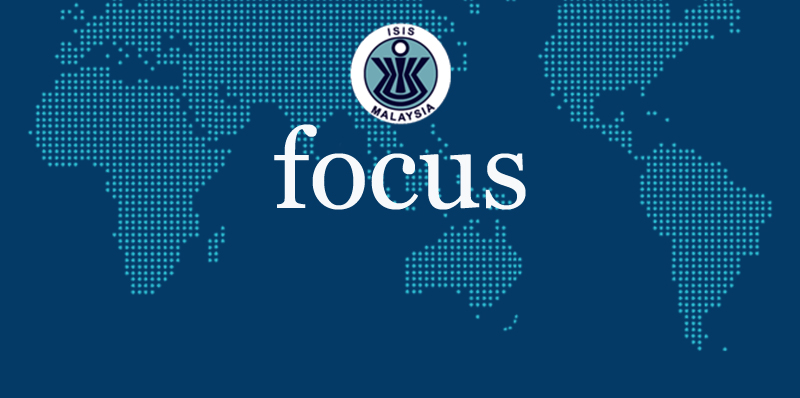While the COVID-19 pandemic has revealed fault lines in ASEAN integration and cooperation, there have also been indications of permanent disruptions and new adjustments as we transition into the post-lockdown, post-pandemic world. This presents an opportunity for policymakers to re-evaluate and strengthen systems and institutions to be more resilient and better prepared for the future.
BY JESSICA WAU
Recent consumer surveys are revealing a shift in patterns of behaviour that could become permanent fixtures. More office equipment is filling up homes and hygienic habits are becoming ingrained as lockdown measures continue.
The year 2020 marks the midpoint since the launch of the ASEAN Community Vision 2025 of “Forging Ahead Together”. There is an ongoing midterm review to assess ASEAN’s progress towards political cohesiveness, economic integration and social responsibility.
However, 2020 is also the year of COVID-19; therefore, the urgency for cooperation and “Forging Ahead Together” is made more salient. In recent special virtual summits, ASEAN leaders are cognisant of the need to “bolster national and regional epidemic preparedness”. Areas where ASEAN can make lasting positive impacts are healthcare, the resilience of supply chains and the use of technology.
The front-facing matter in the pandemic is an immediate test of healthcare systems in ASEAN countries. According to World Bank data, the global average of doctors per a thousand people is 1.5. Singapore far exceeds that with a statistic of 2.3 doctors. However, it is the opposite for many countries in the region with Myanmar, Thailand, Vietnam and Indonesia having less than one physician per one thousand people. Given the desired integration of ASEAN, the first priority is to lay the groundwork for stronger healthcare systems across Southeast Asia.
Currently, ASEAN has a Mutual Recognition Arrangement on medical practitioners that is meant to standardise qualifications across countries. Yet, this has not been able to take off as certification and language barriers remain. Moreover, member states should also work towards having the same standards of testing and reporting of cases. If healthcare systems are not up to standard, there will always be the risk of a re-importation of COVID-19 cases within ASEAN.
A second revelation of the pandemic is the fragility of supply chains. At the onset, an immediate impulse of many governments was to limit the movement of goods and people across borders. While drastic measures had to be taken to delay transmission of the virus, there were unintended consequences in disrupting the flow of essential goods including medical equipment. Some held on tightly to raw materials needed to make surgical masks which ultimately held up mask productions. Export restrictions led to tons of undelivered rice stuck in port containers about to spoil.
Over time, supply chains may be fine-tuned to a fault, leaving countries to scramble for alternatives when a crisis such as COVID-19 hits. ASEAN’s ambitions to increase economic integration must factor in building up the resilience of supply chains. Despite the possibility of redundancies in the system, it nonetheless provides a good opportunity to map out supply chains in the region.
Finally, the role of technology has proved to be central in responding to COVID-19 and will continue to be crucial in the future of regional cooperation in post-lockdown, post-pandemic ASEAN. The ability to hold videoconferences in the interim should not be taken for granted, especially when some countries are not as advanced in their technological infrastructure. We can also expect an increased reliance on contact tracing mobile apps, especially as countries begin to think about ways to ease lockdown measures and open up their economies in the safest way possible.
Furthermore, digital solutions are beginning to address the previous areas of strengthening supply chains and raising the standards of healthcare in the region. For example, telemedicine has been an essential alternative for those who are unwell in quarantine. Data analytics and artificial intelligence will be able to assess where supply chains may be overconcentrated.
Conscious adjustments need to be made through the COVID-19 crisis in building up regional resilience. The ASEAN Community Vision 2025 contains aspirations for further consolidation, integration and stronger cohesiveness as a Community. In light of the current pandemic, common health standards will need to be ensured before member states can think about reopening borders and resuming integration efforts. And technology will be a key enabler. ASEAN’s interdependencies are important for the flourishing of the region and should be further strengthened. This will be key in the post-pandemic recovery process.
Some things will not be the same when the pandemic is over. Although life will eventually resume as normal, there will be permanent disruptions and new adjustments. This is an opportunity. The necessary policies and changes implemented in the present can have a lasting positive impact on the ASEAN Community in the future.
Jessica Wau is Assistant Director (ASEAN) at the Singapore Institute of International Affairs (SIIA)





